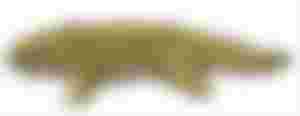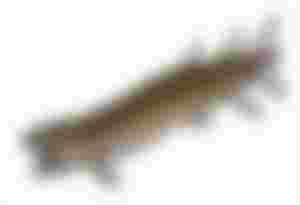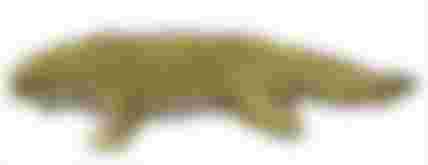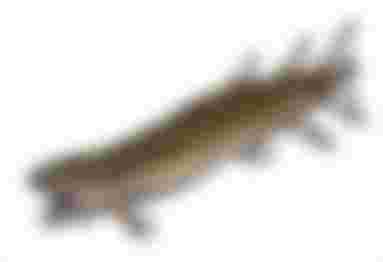When Fish First Breathed Air

385 million years ago, the region was utterly barren. The continents were home to only a few poor plants and fungi, as well as a few pioneering arthropods. On the other hand, the oceans were booming. The seas are teeming with squid, bony fish, and sea scorpions. One school of fish, on the other hand, was about to depart on its own. These adventurous fish will eventually go on one of life's most momentous trips. They'd be the first vertebrates to live on dry land, following arthropods' lead.
They could not, however, just walk onto land. Not yet. They needed to first acquire the ability to breathe air. We have had considerable difficulty analyzing and comprehending the massive leap between fish that breathed via water and fish that breathed air. This is mainly because the breathing organs, such as the gills or lungs, do not fossilize properly. However, this is largely due to the scarcity of fossils from that time period until recently.
Fish made their migration to land 400 million years ago during the Devonian period. For a long time, one of the few fossils available to scientists was an 1880s discovery of a fish called Euthenopteron in Quebec. It existed in shallow estuary waters approximately 380 million years ago. Additionally, it was a "lobe-finnedfish," similar to the fabled Coelocanth. Its fins were shorter and more robust than the fins of a goldfish, which were lengthy, delicate, and had multiple joints. Eusthenopteron's strong limbs may have allowed it to move about in the shallows in search of other fish, but its fins were probably too frail to allow it to walk on land. In the 1930s, scientists found Ichthyostega, a 364 million-year-old species buried in Greenlandic strata. Ichthyostega sported a body more resembling that of a salamander, replete with a fully formed pelvis, powerful limbs, and even fingers.

Ichthyostega, on the other hand, most likely dragged itself along on its front legs, much like mudskippers do today. Additionally, it sported a large, paddle-like tail for swimming, implying that it spent considerable time in the water. Neither of these fossils, however, is as significant in this story as Tiktaalik, a 375 million-year-old species discovered on Ellesmere Island, Canada, in 2006. Tiktaalik had the body of a fish but the skull of a salamander and inflexible, leg-like fins capable of supporting its weight outside of the water. Most significantly, it possessed enlarged primitive hips on which to anchor its hind limbs, a critical step toward becoming a fully four-legged animal. Tiktaalik's land adventures, on the other hand, were almost certainly still in front-wheel drive. Despite having longer legs and hips than Eusthenopteron, its legs and hips were incapable of sustaining the effort required to walk on land. Tiktaalik is a well-known transitional fossil from this period, having characteristics that appear to be halfway between a fish, such as Eusthernopteron, and a four-legged animal, such as Ichthyostega. Regardless of their differences, all three of these fossils are categorized as tetrapodomorphs, a group that includes the earliest four-footed organisms and closely related lobe-finned fish.
Breathing is, of course, one of the most critical parts of land life. So how did these animals, who had evolved to live submerged for millennia, develop the ability to breathe air? As far as we know, all three of our friends, Eusthenopteron, Tiktaalik, and Ichthyostega, possessed gills. Because, despite the fact that gills do not froth well on their own, the bony arches that support them do. All of these creatures possessed gill arches. However, just because they possessed gills did not mean they were incapable of breathing. As it turns out, the absence of gills is not the most reliable sign of when fish first breathed air. The issue is with the shape and location of a small hole in the skull. Numerous fish still have this hole in them at this point. Water enters the gills through the opening of a tube called the spiraculartract. This is a very advantageous characteristic since it enables fish to breathe while their jaws are occupied with food. And this small hole in the skull can explain a great deal about how tetrapodomorphs originally developed the ability to breathe air. Simply compare its presence in fossils to its presence in various modern fish species. The tract's aperture now emerges on the sides of the face, near the front of the skull, directly above the gills in the majority of modern fish. However, there are fish that can breathe air today. And one of these fish, the African bichir, has a wider opening on the rear of its head, almost like a blowhole. Additionally, the opening is slanted upward and downward rather than straight up and down. This is critical information because the angle allows air to enter the bichir's lungs more directly. Contrast this with the openings in tetrapodomorphs' skulls. Eusthenopteron's spiracular tract opens near the front of the head, as it does in the majority of water-breathing fish with gills. The aperture, on the other hand, is on the /top/ of the skull, not the side. Thus, it resembles the bichir, which breaths air directly from the water's surface via its head-hole.

Thus, Eusthenopteron was most likely inhaling both air and water, and due to the hole's proximity to the front of the face, its gills were most likely used to handle both. But! That hole is substantially larger, is located closer to the back of the skull, and is angled in both Ichthyostega and Tiktaalik, just as it is in the bichir. This indicates that these ancient animals' tracts indicated the location of a primitive set of lungs. It is not as conclusive as a superb collection of petrified lungs. However, in modern lungedfish, a larger tube located closer to the lungs is strong indication that both Tiktaalik and Ichthyostega have rudimentary lungs. According to experts, these lungs evolved from a swim bladder that is still found in many modern fish. Swim bladders are typically stuffed with air, which fish ingest in order to maintain their buoyancy. They were almost certainly present in the ancestors of Tiktaalik and Ichthyostega. According to one explanation, the swim bladders of some lobe-finned fish got larger and developed more blood vessels, allowing them to carry oxygen to the bloodstream more efficiently. With time, this organ developed a new function, discovering a new way to utilize the already available air: breathing. This makes sense when considering modern air-breathing fish such as the lungfish and bichir. Their swim bladders are bipolar and densely packed with blood veins, much like our lungs. However, with all that lovely water around, why would any fish, modern or fossil, bother to breathe? During the Devonian, things were a little more complicated.
All of these factors contributed to a steady decline in the amount of oxygen in the oceans. On land, new plant species were diversifying, which should benefit oxygen levels. Except that every single one of these new plants perished on land before being carried into the sea. All of the organic material created large algae blooms, which in turn fed bacteria that depleted the water of oxygen. Thus, by the late Devonian, just as fish began to move onto land, oxygen levels in the air had plummeted to as low as 13%, compared to roughly 21% today. Animals frequently suffer from low oxygen levels. It's far worse for aquatic animals, as oxygen concentrations in water are continually lower than in the air. When oxygen levels began to fall 385 million years ago, the advantage of migrating to land became clear: no more gasping for air in the water. The capacity to breathe air enabled Tiktaalik, Ichthyostega, and probably even Eusthenopteron to become more active and equipped for hunting.
And it was from these earliest air-breathing creatures that the true tetrapods evolved, the first vertebrates to ever live entirely on dry land. Eventually, they lost their gills. By the time the Devonian Period ended and the Carboniferous began, they had also lost their spiracular tracts and began breathing through an entirely different sort of skull hole called nostrils. However, our forefathers' lobe-finned fish were not the first ones to develop the ability to breathe air. Today's catch includes lungfish, mudskippers, bowfin, and bichir. They are not, for example, direct descendants of Tiktaalik. Rather than that, they each developed that capacity at their own rate and on their own schedule. This demonstrates that, through time, breathing air has shown to be quite helpful to a large number of humans. Therefore, keep in mind that you owe a debt of gratitude to your fishy ancestors for all of the breaths you're taking right now, and the way you're taking them.


